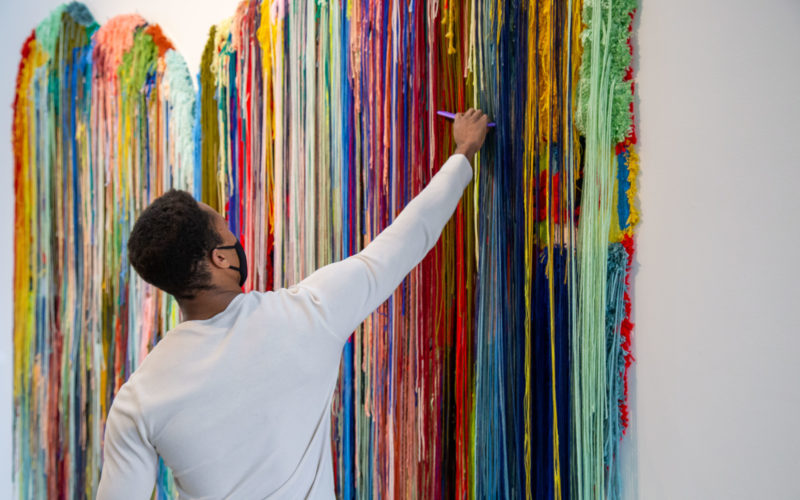Make a gift to help keep Atlanta Contemporary free, safe, and open to all.
Bea Fremderman
Bea Fremderman
Stranger Man
May 9, 2019 – June 16, 2019
Seems like whenever you hear of a big fire the weather, conditions are always the same: clear, hot below a big sun, a brisk breeze shoving its way through the city. When a small fire broke out in the West End’s Candler Warehouse, it was the fourth such call the city of Atlanta received within an hour. There were burning mattresses at Decatur Street between Fort and Hilliard and ten homes were lost just south of the Georgia Railroad. The fire department was scattered, spread thin rushing across the city. They did not have enough equipment and were low on water. The strong winds caused the fires to join forces. The Great Atlanta Fire of 1917 was different from Sherman’s 1864 fire, as the latter gained speed as a result of engulfing shanties and lean-to homes built with wood shingles. The blaze accumulated potential energy, rumbling down long avenues like falling dominoes for eleven hours. In the end Atlanta lost 1,938 buildings and had over 300 scorched acres or 37 city blocks.
The Means Street Historic District was secure during the fire. The building you stand in has been here since 1903 when it was built for the Atlanta Buggy Company. Always used to facilitate movement, between 1911 and 1931 Atlanta Contemporary was a series of buildings constructed by the Standard Oil Company of Kentucky. Owned by John D. Rockefeller, Standard was one of the largest oil refineries in the world. Had the wind pushed the West End fire further west as opposed to east, I would not be sitting here.
The Chute Space is one of the two original remnants of this building’s history (the other being a Standard Oil Company mural on the original facade of the building, now in the admin offices). I cannot come down these steps and not think of that day in 1917. It is cold and dim, oxygen feels limited, the air smells of must and dust, and yet with a volatile fire raging a stone’s throw away, there is no other bunker I’d rather be in. Hidden from the world, we see other parts of the campus where we have to battle back nature, but the Chute Space has not corroded with time. Down here, we are safe.
For her show Stranger Man, Bea Fremderman has set up shop after the big fire. Her installation implies residence, someone having set up camp below ground, below the smoldering smoke. The resident is alone, naked to the empty world, clothing drying on a line so long it sprouted its own ecosystem. This new vegetation lives and dies, grows and shirks with the lack of available sunlight, water, and atmosphere. The chute’s man-hole cover firmly in place, blocking the sunlight, our solitary camper has created low lit green-yellow beacons, a low hanging sky. We are protected. We have time to think. To sit still. For now, this is home.
Bio
Bea Fremderman
Born in Kishinev, Moldova, Bea finished her studies at The School of the Art Institute in Chicago. Her current research interests are the economic impacts of climate change, apocalyptic survival tactics, feelings of global dread and false notions of freedom. Fremderman’s work combines parts and segments of a Capitalist reality as a reflection of daily life that has slipped away from society’s consciousness. Fremderman’s work has been exhibited in Mexico and Canada, and throughout the United States and Europe. Exhibition highlights include How to Do Nothing with Nobody All Alone by Yourself at Shoot the Lobster, NY, Inflected Objects #2 Circulation – Otherwise, Unhinged at Future Gallery in Berlin, Machine in the Garden at Springsteen Gallery in Baltimore, Solastalgia at Born Nude Gallery in Chicago, Office Space at Yerba Buena Center for the Arts in San Francisco, Hindsight is 20/20 at Aran Cravey Gallery in Los Angeles and Younger Than Jesus at the New Museum in New York. She currently lives and produces in New York City.


